Drove the much anticipated all-new ISUZU D-MAX bakkie last week, in it’s seventh generation now, built at Gqeberha over the last multitude of years. It is now 100 percent Japanese owned and invested in. They will deliver to market a whopping 24 model variants, encompassing the single-cab, double-cab & extended cab.
Perennially coming in at either two or three in the bakkie sales figures, Isuzu have long been known for making durable and reliable bakkies. Now the D-Max promises to make them feature bakkies that would want to be seen in the city areas as well. We drove the 1.9LDDI so this article will have to be in two parts, as the 3.0 L has still to be driven. We drove the latter and it left a much more positive impression on us, the 3.0L engine gives it more power and grunt, and generally doesn’t feel as bumpy as the 1,9L.
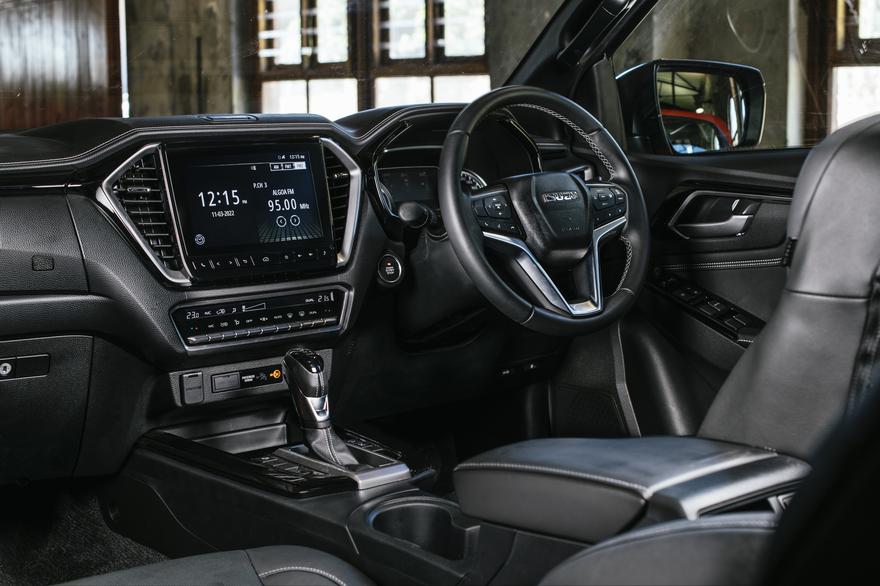
Styling
The all-new ISUZU D-MAX is looks more butch and sportier than ever. This is clearly evident by the fresh and more aggressive front fascia and grille, centred around a modern interpretation of the established ISUZU D-MAX design cues.
Slimmer, more angular lights that include Bi-LED projector headlamps and LED daytime running lights on the high-series models give the new ISUZU D-MAX distinctive on-road presence. This is complemented by LED edge lighting for the turn indicators on the mirror housings, crisp new LED combination tail lamps and an integrated LED high-mount brake light at the rear that continue the contemporary theme. As is the case with SA built bakkies, they are extensively tested in SA conditions, to ensure that heat and dust etc are factored into the comfort levels.
Despite its more athletic appearance, the new ISUZU D-MAX is bigger and more spacious in all key areas. The bonnet and load area have been heightened by 15 mm and 30 mm respectively, while the wheelbase has been extended by 30 mm for greater optimisation of the cabin structure.
Everyday comfort and convenience have also been enhanced with longer front doors for Single Cab and Extended Cab models, and a new longer rear door for the versatile and family-oriented Double Cab, thanks to the B-pillar being moved 25mm forward to further improve access for rear-seat occupants. Overall, the new design ensures that the ISUZU D-MAX provides easier ingress and egress, matched to increased passenger space and legroom.
Similarly, the new loadbox design has released additional loading space and capacity, with up to 15 mm added to the bed floor length, and an extra 30 mm in depth for the box sides. At 1 530 mm wide, the tailgate offers easy loading of wide objects for added convenience and versatility.
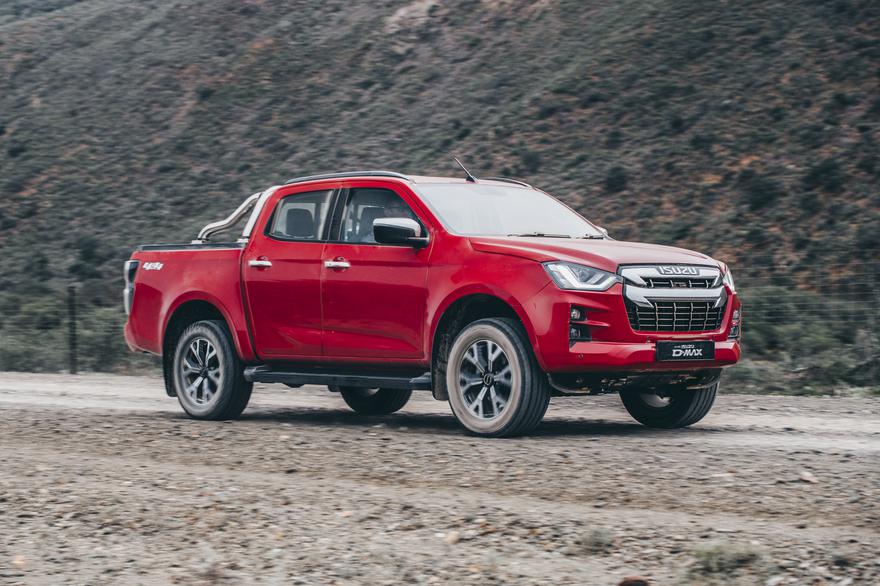
Cabin.
The cabin is comfortable and spacious, and offers high levels of a more premium feel to it. It features sharp graphics and a variety of layered and textured surfaces with soft-touch materials – most noticeably on the dashboard – that provide a tactile, quality feel throughout. The new dashboard layout lifts the game with an elegant, simplified layout that positions the controls and switches within easy reach. There are still hard plastics present, a hallmark of past models, but they seem more tolerable now.
The instrument binnacle features analogue dials for the rev counter and speedometer, along with a large 4.2-inch LCD multi information display (MID) that provides high resolution for easy readability and access to a wide range of functions.
A fully integrated Wide Extended Graphic Array (WXGA) display infotainment system features prominently in the centre stack, in 7-inch or 9-inch versions depending on model. The system is touch screen activated and includes Apple CarPlay and Android Auto to seamlessly mirror your connected smartphone.
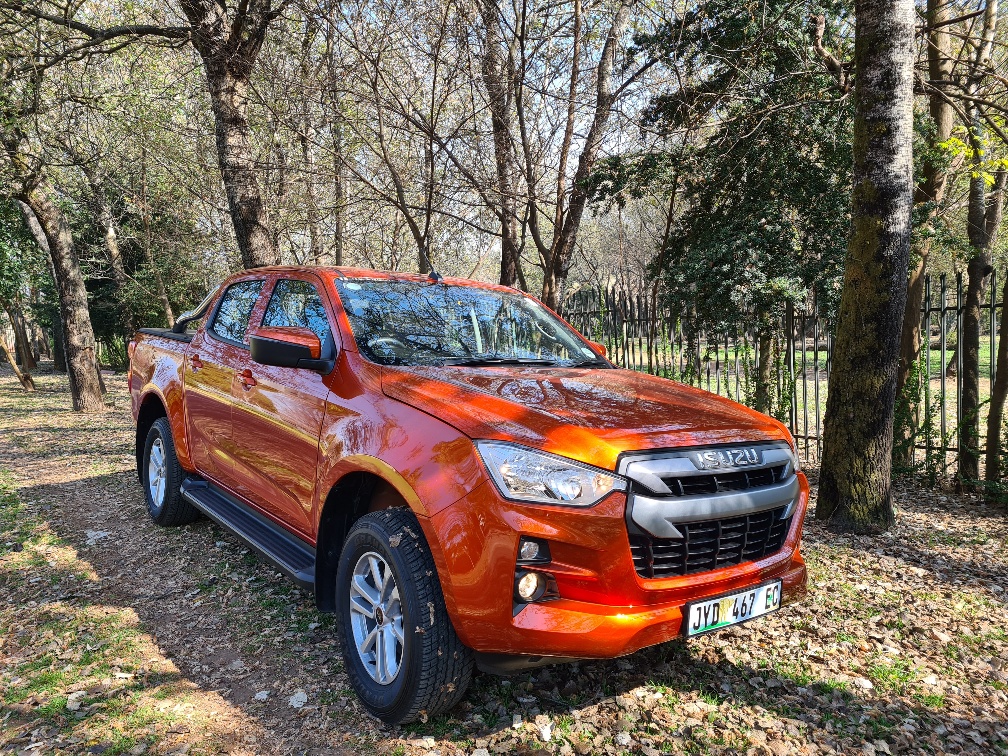
Technology and safety
All new ISUZU D-MAX models come standard with impressive safety credentials such as Anti-lock Brakes (ABS), Electronic Brakeforce Distribution (EBD) and Brake Assist (BAS). Also added to the mix are Electronic Stability Control (ESC) with Traction Control, Hill Start Assist (HSA), Hill Descent Control (HDC) and Trailer Sway Control.
The range-topping V-CROSS raises the benchmark even further, as it boasts Intelligent Driver Assist System (IDAS) that incorporates a comprehensive suite of active and passive safety features. It includes advanced features such as Forward Collision Warning (FCW), Autonomous Emergency Braking (AEB), Adaptive Cruise Control (ACC), Lane Departure Warning System (LDWS), Lane Departure Prevention (LDP) and Lane Keep Assist System (LKAS), Blind Spot Monitor (BSM), Rear Cross Traffic Alert, Parking Aid (front and rear) and Multi Collision Brake (MCB) that will automatically apply the brakes when the airbags are deployed.
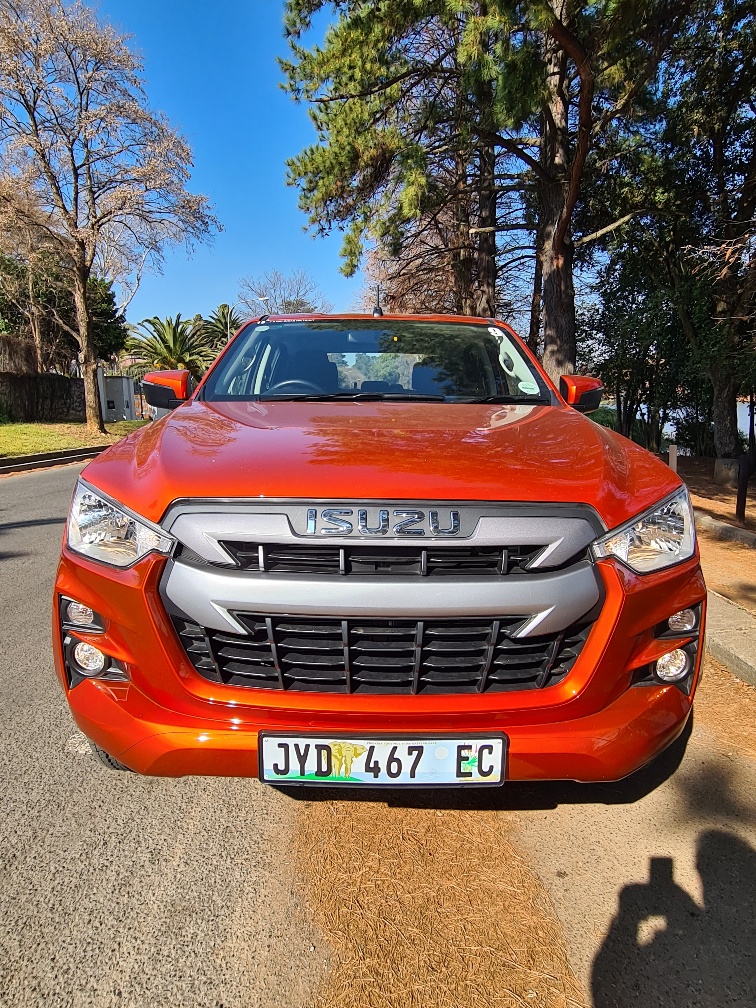
On LSE and V-CROSS models, a Passive Entry & Start System (PESS) is standard. Along with the keyless unlocking and push-button start functionality, the system also allows remote engine start (on automatic models) from the key fob within a 20 metre range of the vehicle. The system also has an automatic locking function when walking away from the vehicle with the key.
In the event of a collision the ISUZU D-MAX is equipped with up to eight airbags, depending on specification level. Along with the dual front passenger airbags, roof rail (curtain) airbags, seat side airbags and a driver’s knee airbag, a far side airbag is also available on the top V-CROSS models which provides additional head protection between front seat occupants.

Power and performance
The new ISUZU D-MAX range is available with a choice of two diesel engines that build on Isuzu’s long-standing reputation for durability, reliability and efficiency.
Isuzu’s 1.9-litre Ddi powerplant is a new powertrain to the ISUZU line-up and is standard on all Single Cab models and is available on Extended Cab and Double Cab derivatives. This engine was sufficiently powered for Highveld conditions, but had some turbo lag on pull off which was not great. It was fuel efficient however. The engine produced 110 kw, which is on the lower end, and not quite up to the standard, which seems to be on the higher side.
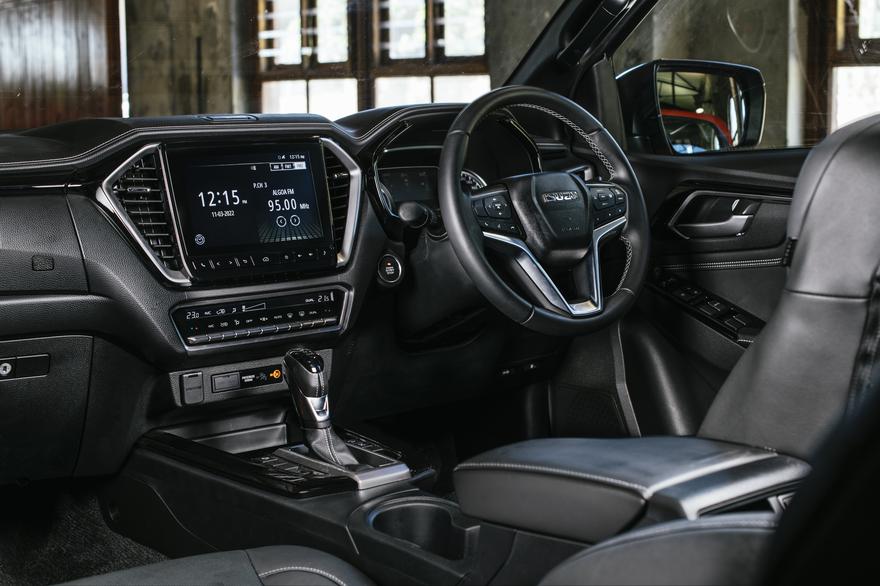
There is very little road noise, and the drive is relatively quiet..
Available on mid to high-series Extended Cab and Double Cab models, the upgraded 3.0 Ddi engine has been optimised for more torque at lower engine speeds, superior pull off and acceleration, significantly reduced noise levels and optimised consumption. In its latest guise, the 3.0-litre unit delivers 140 kW of peak power at 3 600 r/min, with its maximum torque figure of 450 Nm available from 1 600 to 2 600 r/min.
A choice of six-speed manual or six-speed automatic transmissions is available. The manual gearbox benefits from optimised gear ratios and an improved shift action, and makes the most of the strong torque delivery and superb fuel economy. The automatic version delivers an ideal combination of refinement and responsive performance and incorporates a sequential sport mode that enables the driver to select a specific gear manually, which is helpful when towing and off-road driving.
A choice of six-speed manual or six-speed automatic transmissions is available. We drove the auto variant, which changes gears smoothly.
Underlining its suitability for both work and play, the D-MAX is available in both 4×2 and 4×4 guise across Single Cab, Extended Cab and Double Cab body styles.
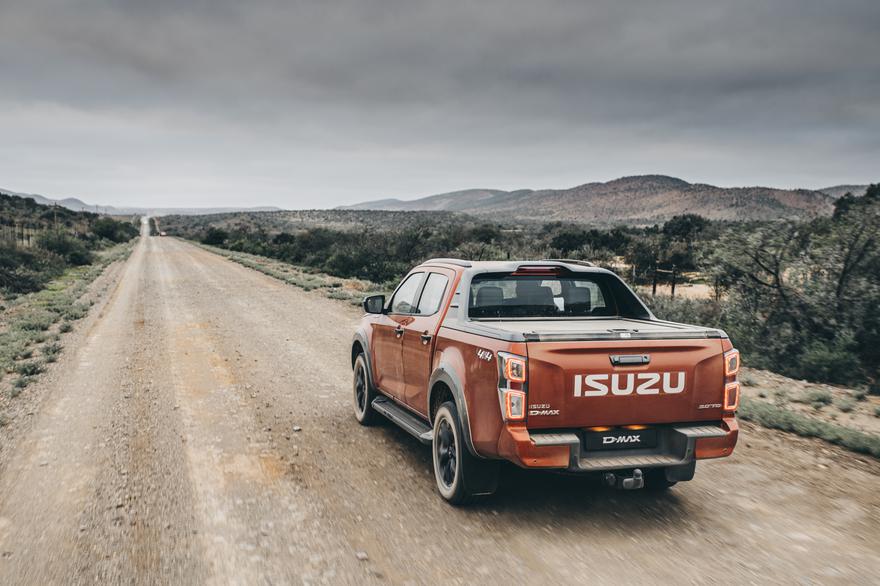
Specification levels
Ensuring that there is a D-MAX model to cater to virtually every need and application, there are five specification levels, ranging from entry-level Standard to upmarket V-CROSS.
The list of features on LS models which we drove, includes 17-inch alloy wheels, a 7-inch screen for the infotainment system which offers Bluetooth and Wi-Fi connectivity, six speakers, USB ports in the front and rear, cruise control, seven airbags, halogen daytime running lights, a rear-view camera and black side steps.
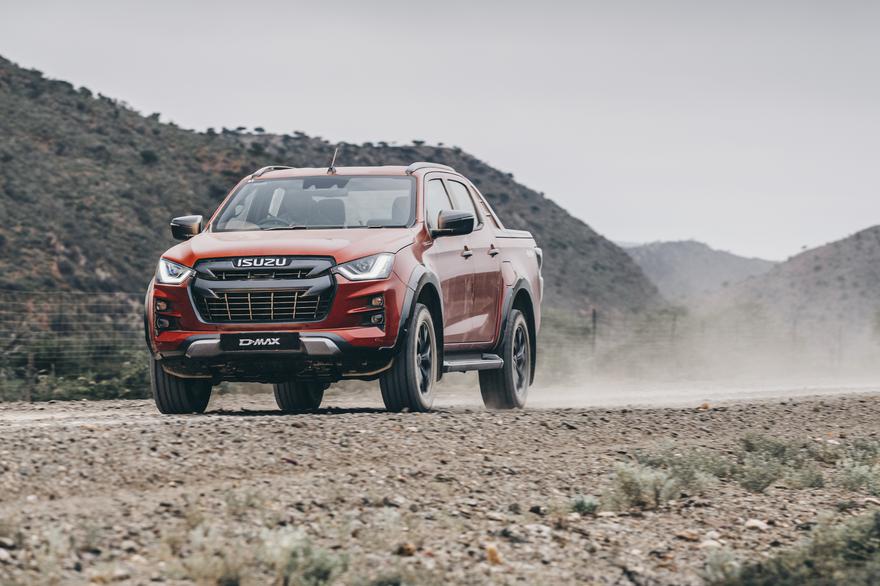
The jewel in the D-MAX crown is the V-CROSS specification level. Key features include leather seats with eight-way power adjustment, Isuzu’s Advanced Driver Assist System with latest-generation active driving safety features, eight airbags and automatic high beam activation. It is also differentiated from the rest of the range with gun metallic finishes for the grille, fender flares, door handles, mirror caps, roof rails and the distinctive hooped sports bar.
With 11 models in the line-up, the Double Cab offering is extensive. Covering all specification grades, five of these make use of the 1.9-litre engine in L and LS models, and a choice of manual or auto, and two or four-wheel drive. Customers opting for the 3.0 Ddi engine can select LS, LSE or V-CROSS specification. A single manual derivative is available in the LS model, with the rest equipped with the six-speed automatic and either 4×2 or 4×4 drivetrains.
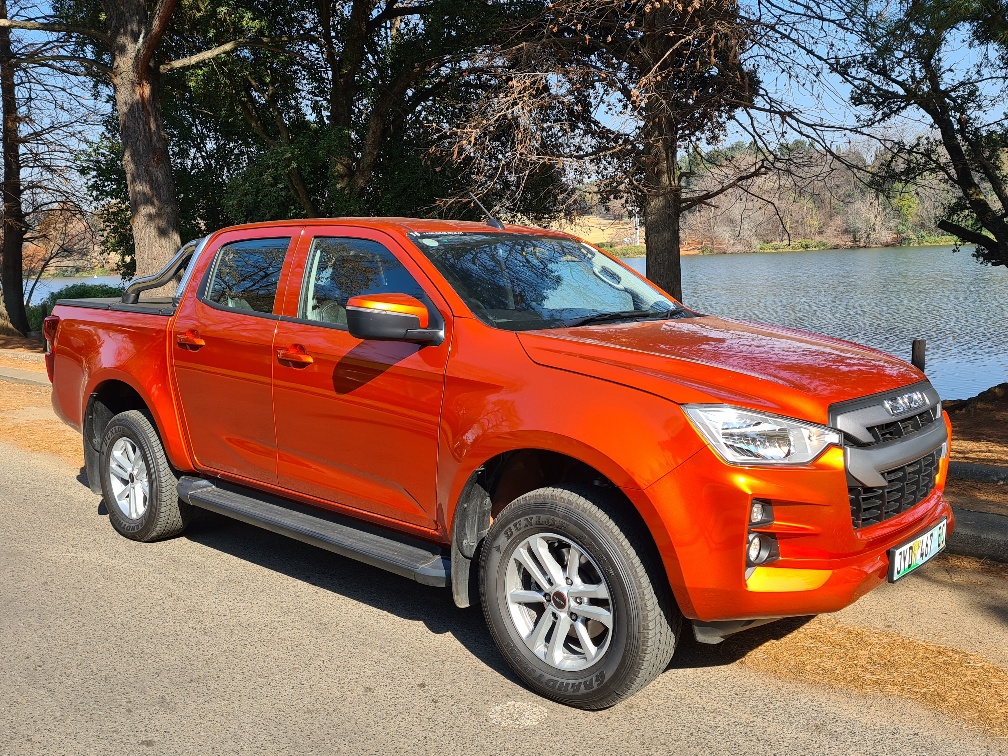
ISUZU Complete Care
ISUZU Complete Care comes standard with every new ISUZU D-MAX and embodies Isuzu’s unwavering commitment to aftersales service and customer satisfaction. All new ISUZU D-MAX models are sold as standard with a comprehensive five-year/120 000 km warranty and roadside assistance, as well as a five-year unlimited distance anti-corrosion warranty.
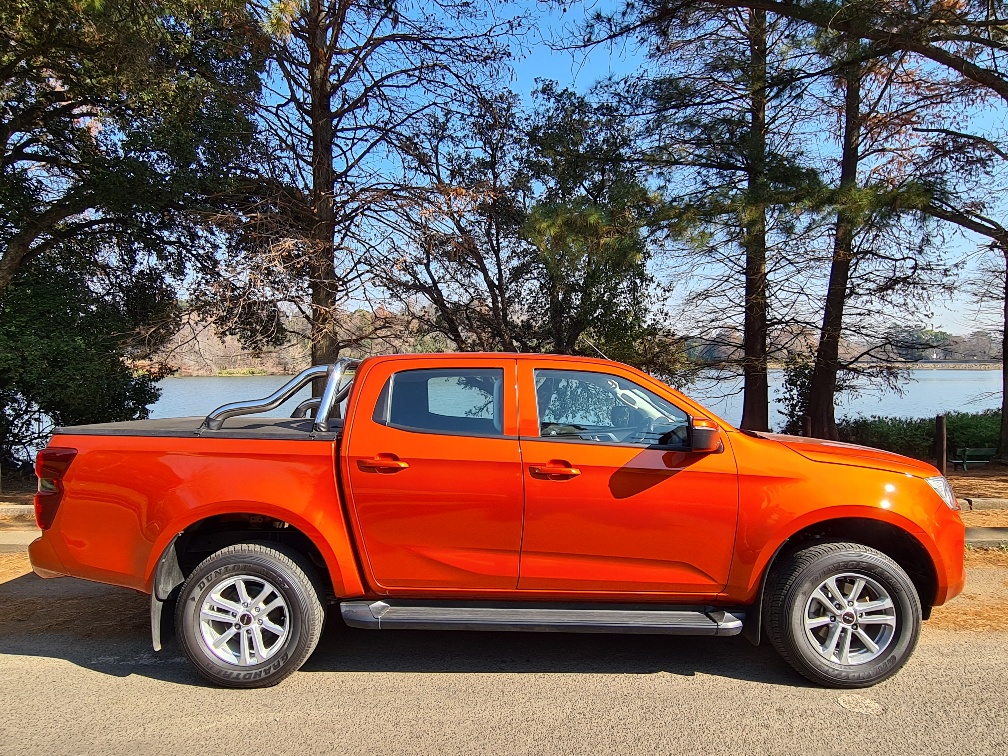
In addition, a five-year/90 000 km service plan is included in the purchase price, with service intervals scheduled every 15 000 km or annually, whichever comes first.
In summation, the D-Max is offering a lot for what you pay for. The bakkie is attractive, capable and reliable. I’m not quite sure that they are hitting the mark with the urban thing. Isuzu has always been a rugged bakkie, and the 3.0L would certainly be my choice in the range.

Pricing
| MODEL DESCRIPTION | SUGGESTED PRICING | |
| 1 | 1.9 Ddi Single Cab HR | R 401,700.00 |
| 2 | 1.9 Ddi Single Cab HR L | R 421,000.00 |
| 3 | 1.9 Ddi Single Cab HR L A/T | R 439,200.00 |
| 4 | 1.9 Ddi Single Cab 4×4 L | R 506,200.00 |
| 5 | 1.9 Ddi Single Cab 4×4 L A/T RHD | R 528,800.00 |
| 6 | 1.9 Ddi Extended Cab HR | R 433,600.00 |
| 7 | 1.9 Ddi Extended Cab HR L | R 448,500.00 |
| 8 | 1.9 Ddi Extended Cab HR LS | R 477,000.00 |
| 9 | 1.9 Ddi Extended Cab HR LS A/T | R 496,200.00 |
| 10 | 3.0 Ddi Extended Cab HR LSE A/T | R 595,100.00 |
| 11 | 3.0 Ddi Extended Cab 4×4 LSE A/T | R 670,300.00 |
| 12 | 1.9 Ddi Double Cab HR L | R 498,900.00 |
| 13 | 1.9 Ddi Double Cab HR L A/T | R 517,100.00 |
| 14 | 1.9 Ddi Double Cab HR LS | R 520,800.00 |
| 15 | 1.9 Ddi Double Cab HR LS A/T | R 537,500.00 |
| 16 | 1.9 Ddi Double Cab 4×4 L | R 575,900.00 |
| 17 | 1.9 Ddi Double Cab 4×4 LS A/T RHD | R 629,300.00 |
| 18 | 3.0 Ddi Double Cab HR LSE AT | R 716,400.00 |
| 19 | 3.0 Ddi Double Cab 4×4 LS | R 679,400.00 |
| 20 | 3.0 Ddi Double Cab 4×4 LS A/T | R 697,200.00 |
| 21 | 3.0 Ddi Double Cab 4×4 LSE A/T | R 771,100.00 |
| 22 | 3.0 Ddi Double Cab V-Cross HR A/T | R 760,100.00 |
| 23 | 3.0 Ddi Double Cab V-Cross 4×4 A/T | R 814,700.00 |
